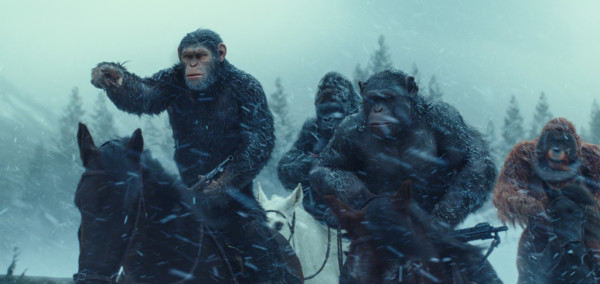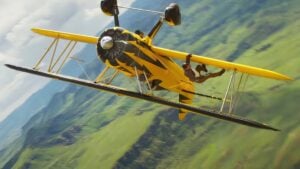Written in Partnership with 20th Century Fox Australia.
In the third installment of the rebooted Planet of the Apes trilogy, 20th Century Fox’s War for the Planet of the Apes, humans and apes battle it out for supremacy—and the future of their species. Again. Except this time with darker themes of racial oppression and animal cruelty, underpinning glorious visual effects from the team behind the trilogy.
The film releases today (November 15) on Blu-Ray and DVD, but for the VFX studio responsible for the simian half of things, Weta Digital, the stakes felt nearly as high as the onscreen battle.
“On the first film it was ‘How can we do it?’” Dan Lemmon, VFX Supervisor at Weta recalls. “We were riding the very edge of the technology, and things were kind of fragile. We had an idea that hadn’t been battle-tested, so there was a lot of inventing and problem-solving.” He tells me. Lemmon, who was nominated for an Oscar for each of the first two Apes films in the current reboot series, says Weta can’t just use the same technology from previous movies and that innovation is absolutely key, everything has to keep getting better.

1 THE CHIMP
Caesar (played by Andy Serkis), the protagonist and leader of the apes is the most complex CGI character ever developed. “In this movie, Caesar is even more emotionally distraught,” Lemmon says. “The facial expressions Andy was making were so evocative—but also incredibly difficult to map back onto the face of a chimpanzee.”
To accomplish it, Weta drew on video-game technology right at the cutting-edge of what was possible. “We adapted graphics cards to make our animation tools a lot more interactive and faster. The animators can try things out and iterate at a rate that’s, in some cases, four or fives times as fast as what they were able to do on the last movie.”
2 THE SNOW
Before Weta started on the film, director Matt Reeves gave the creative team a warning; there’s going to be snow. The team were faced with some major challenges: how does fresh snow mix with fur? How does snow stick to fur? How does it clump on? How does it fall off? How does it react as the apes walk through the snowy environment?
“The biggest challenge with snow is interaction,” says Dan Lemmon, emphasising that it’s especially a challenge with fur. “Falling snow sticks to fur, but if it’s close to the skin it will start to melt. This in-between stage is a material and lighting challenge to get it to look totally believable.”
Creating the snow was then a feat of collaboration. Modellers styled the fur and added snow to it, while coders wrote custom programs to make the snow look more realistic as it transfers to or from the apes’ bodies. And the effects guys added the falling snow and footprints around them.

3 THE TREES
War for the Planet of the Apes features an epic battle that takes place in the forest. For this installment, Weta built upon technology developed for another film, The Jungle Book.
“On Jungle Book, we made probably a dozen trees, and then we started building the jungle from them,” Lemmon says. “But we ran into the same problem that we’ve run into several times: You start to see the same tree over and over again. Plus, each tree might look correct, but the way that they relate to one another—the way the branches encroach upon another’s canopy and the way that they cluster together and are arranged—those are all things that are difficult to replicate.” The trick was to go micro, and focus on branches and leaf structures, rather than on overall trees, as the model for populating the apes’ CGI woods.
Wich part do you think is more difficult? The apes, the snow or the trees? If that didn’t satisfy your VFX fix, head over and check out our day becoming an ape with Dan Lemmon and the team at Weta Digital in Wellington.
War For The Planet Of The Apes is new to Blu-ray, DVD & Digital. Get it here on iTunes and here on Google Play.
















